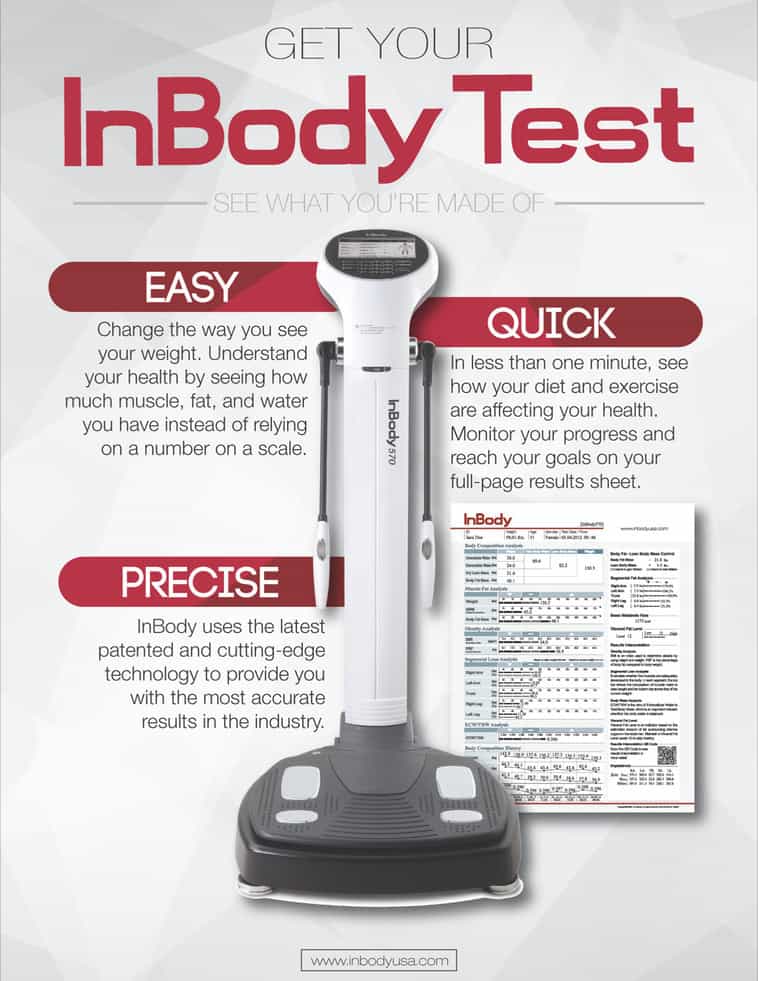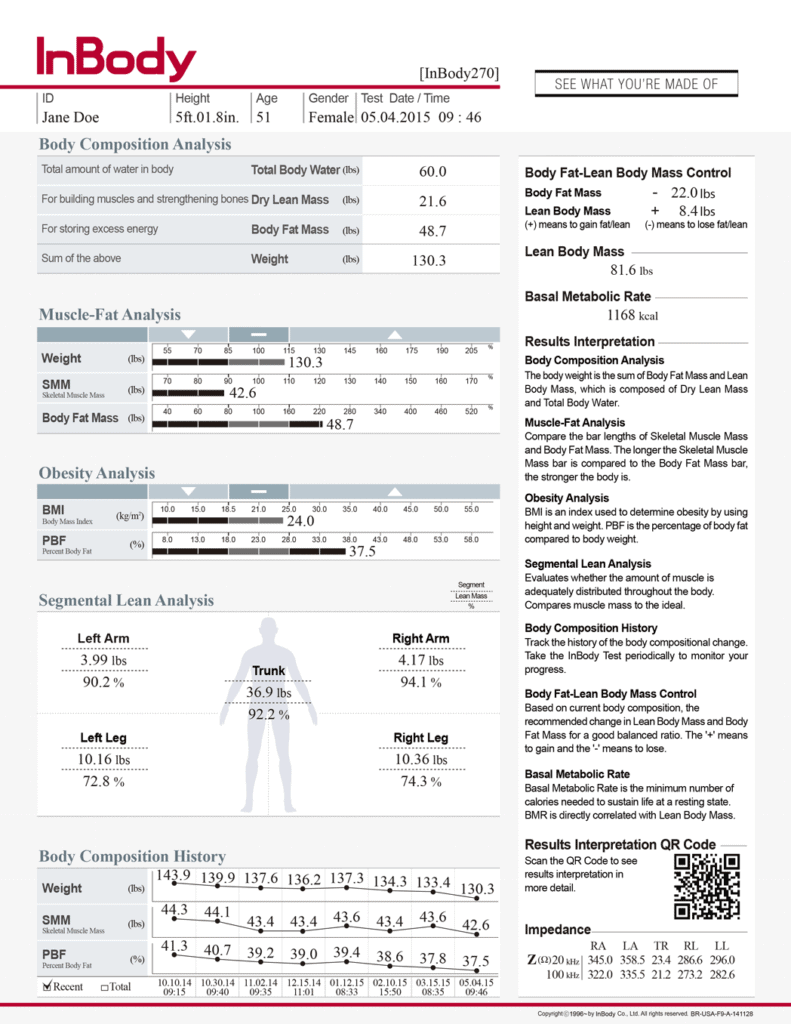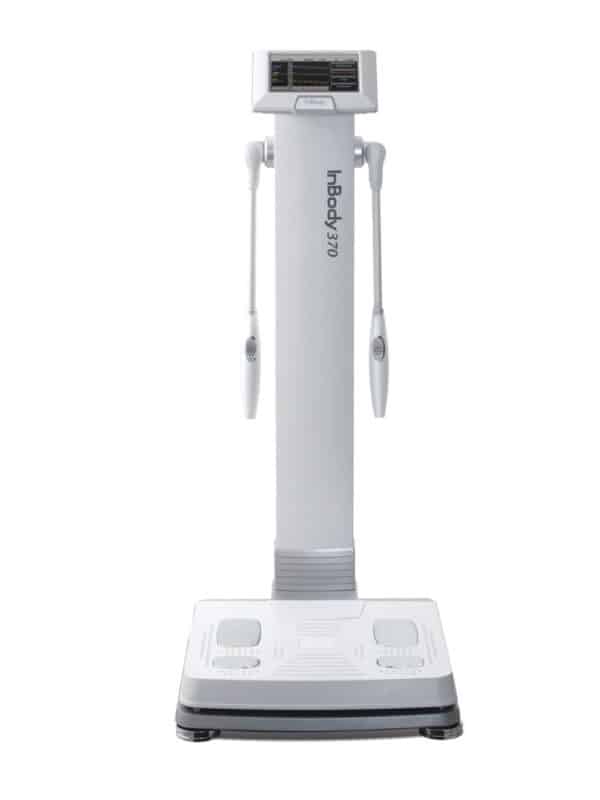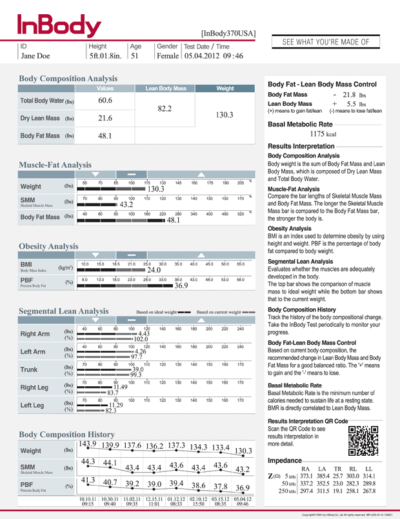InBody scan results can provide valuable insights into your body composition and overall health. Understanding how to interpret these results is key to tracking your progress toward your fitness goals. In this comprehensive guide, we will break down the different components of an InBody scan report and explain what each measurement means for your body.
To ensure accurate and reliable results from your InBody scan, there are key steps you can take to prepare yourself beforehand. By following these guidelines, you can maximize the effectiveness of the scan and gain valuable insights into your body composition.
Tips for Accurate Results
When preparing for your InBody scan, it is important to follow these tips to achieve the most accurate results:
- Avoid consuming food or beverages at least 3 hours before the scan.
- Use the restroom before the scan to ensure a more accurate measurement of your body composition.
- Wear tight-fitting clothing or minimal clothing to get the most precise reading of your body composition.
After following these guidelines, you can be confident in the accuracy of your InBody scan results and rely on the data to make informed decisions about your health and fitness goals.
What to Wear and What to Avoid


The clothing you wear during an InBody scan can impact the accuracy of the results. It is recommended to wear tight-fitting clothing, such as athletic wear or form-fitting attire, to minimize any interference with the scan. Avoid wearing heavy clothing, such as sweaters or jackets, as they can add unnecessary weight and affect the measurement of your body composition.
The InBody scan relies on electrical currents to measure your body composition accurately. Therefore, it is crucial to remove any metal jewelry, such as watches, bracelets, or necklaces, as they can interfere with the electrical signals and potentially affect the results of the scan.
Deciphering the InBody Scan: A Step-by-Step Guide
This scan provides a comprehensive analysis of your body, including muscle mass, fat content, and water weight. By decoding the results of the InBody scan, you can gain valuable insights into your fitness levels and make informed decisions about your health goals.
| Reading Your Body Composition | Analyzing Muscle-Fat Analysis |
| Your body composition data from the InBody scan includes metrics such as body fat percentage, muscle mass, and water weight. Understanding these measurements can help you track changes in your body composition over time and tailor your fitness and nutrition plan accordingly. | Analyzing the muscle-fat analysis from the InBody scan allows you to see the distribution of muscle and fat in different parts of your body. This information can help you target specific areas for muscle building or fat loss, depending on your health and fitness goals. |


Reading Your Body Composition
Your body fat percentage is a crucial metric to monitor as it indicates the amount of fat in your body relative to your total weight. A healthy range for body fat percentage varies based on age and gender, but generally falls between 15-20% for women and 10-15% for men. Keeping your body fat percentage within a healthy range is important for overall health and can lower the risk of various diseases.
Tracking your muscle mass is imperative for evaluating your strength and physical fitness. Increasing muscle mass can boost metabolism, improve athletic performance, and enhance overall body composition. By monitoring changes in your muscle mass over time, you can adjust your workout routine and nutrition to support muscle growth.
Analyzing Muscle-Fat Analysis
Analyzing the muscle-fat analysis from the InBody scan provides a detailed breakdown of muscle distribution in your body. It shows the amount of muscle mass in each limb and segment, highlighting any muscle strength imbalances that may exist. By identifying these imbalances, you can focus on targeted exercises to improve muscle symmetry and overall strength.
This precise analysis of muscle and fat distribution can also help in setting realistic fitness goals. If you aim to increase muscle mass in a specific area or reduce fat in certain regions, the muscle-fat analysis will guide you in creating a tailored workout and nutrition plan to achieve your desired results.
Interpreting Weight and Body Mass Index (BMI)
When you receive your InBody scan results, two important metrics that you will come across are your weight and Body Mass Index (BMI). These metrics can provide valuable insights into your overall health and fitness levels.
Tips for Understanding Your Weight Metrics
When analyzing your weight metrics from the InBody scan, it’s important to consider not only the number on the scale but also your body composition. Factors like muscle mass and body fat percentage play a significant role in determining your overall health and fitness.
- Focus on trends over time rather than day-to-day fluctuations in weight.
- Consider consulting with a healthcare professional if you have concerns about your weight metrics.
Recognizing the importance of maintaining a healthy weight and body composition is crucial for overall well-being and reducing the risk of chronic diseases.
The Role of BMI in Health Assessment
Health professionals often use BMI as a tool to assess an individual’s overall health and risk of developing weight-related conditions. BMI is calculated by dividing an individual’s weight in kilograms by the square of their height in meters.
Health organizations categorize BMI ranges into underweight, normal weight, overweight, and obesity, providing a general guideline for assessing health risks associated with weight.
Your BMI can provide a rough estimate of your body fat percentage and help you understand where you fall on the weight spectrum in relation to your height.
Assessing Muscle and Strength
Despite the wealth of information provided in an InBody scan, one of the key areas individuals often focus on is their muscle and strength metrics. Understanding these results can help tailor fitness goals and track progress effectively.
Understanding Skeletal Muscle Mass
One of the important components of muscle analysis in an InBody scan is skeletal muscle mass. This metric represents the total weight of muscles in your body and is crucial for assessing your overall strength and metabolism. By tracking changes in skeletal muscle mass over time, you can determine if your training and nutrition plan are effectively supporting muscle growth or maintenance.
Factors such as age, gender, and physical activity level can influence your skeletal muscle mass results. It’s important to consider these factors when interpreting your InBody scan to set realistic goals and expectations for muscle gain or maintenance.
Factors Affecting Muscle Distribution
An important aspect to consider when analyzing muscle and strength results is how muscle is distributed throughout your body. Factors affecting muscle distribution include genetics, workout routines, and muscle imbalances. Understanding these factors can help you identify areas that may require more focus during your training sessions.
- Genetics play a significant role in determining muscle distribution and can affect how easily you build muscle in certain areas of your body.
- Workout routines that target specific muscle groups can lead to differences in muscle distribution and overall strength.
- Muscle imbalances, if not addressed, can impact performance and increase the risk of injury.
Muscle distribution is not always uniform throughout the body, and it’s common to have variations in muscle mass between different areas. By understanding the factors that influence muscle distribution, you can design a well-rounded training program that addresses any imbalances and supports overall muscle development.
Evaluating Body Fat Percentage
Once again, understanding your body fat percentage is crucial in assessing your overall health and fitness level. By evaluating this key metric, you can gain insights into how much of your body is made up of fat versus lean mass, helping you set realistic goals and track your progress more effectively.
Healthy Fat Ranges and How to Interpret Them
The body fat percentage ranges for men and women vary, with imperative fat levels for men being around 2-5% and for women around 10-13%. A healthy body fat range for men is typically between 10-20%, while for women, it usually falls between 18-28%. If your body fat percentage is above these ranges, it may indicate an increased risk for various health issues, such as heart disease, diabetes, and obesity. However, having too low of a body fat percentage can also lead to health problems, such as hormonal imbalances and decreased immune function.
- Ensure your body fat percentage falls within the healthy range based on your gender.
- Monitor changes in your body fat percentage over time to gauge the effectiveness of your fitness and nutrition regimen.
Tips for Analyzing Visceral Fat
The distribution of fat in your body, particularly visceral fat around your organs, plays a significant role in your health. Visceral fat, which is not visible from the outside, can increase your risk of developing metabolic disorders and cardiovascular diseases. By analyzing your visceral fat levels, you can take proactive steps to reduce them through lifestyle modifications like exercise, a balanced diet, and stress management.
- Pay attention to your waist circumference, as excess visceral fat often accumulates around the midsection.
- Regularly engage in physical activity to help reduce visceral fat levels and improve overall health.
With the InBody scan results, you can gain valuable insights into your body composition and make informed decisions about your health and fitness goals. By understanding your body fat percentage and visceral fat levels, you can tailor your lifestyle choices to optimize your well-being and reduce the risk of chronic diseases.
Monitoring Hydration and Water Balance
Now, let’s explore the imperative aspect of monitoring hydration and water balance through your InBody scan results. Understanding your body’s water composition and balance is crucial for overall health and well-being.
The Importance of Segmental Water Analysis
One of the key features of the InBody scan is its ability to provide segmental water analysis, which breaks down your body’s water composition into different parts such as intracellular water, extracellular water, and total body water. This detailed analysis helps you understand how water is distributed throughout your body, providing insights into cellular health, hydration levels, and potential imbalances.
Segmental water analysis is particularly valuable for athletes, individuals looking to optimize their fitness levels, or those with specific health goals. By monitoring changes in segmental water levels over time, you can make informed adjustments to your hydration, nutrition, and exercise routines to achieve your desired outcomes.
How to Use Hydration Data for Health Improvement
Data from your InBody scan can be utilized to improve your overall health and well-being by focusing on optimizing your hydration levels. By tracking changes in your body’s water composition, you can identify areas that may require attention and make targeted efforts to improve your hydration status.
Hydration plays a key role in various bodily functions, including digestion, circulation, temperature regulation, and overall performance. By leveraging the hydration data from your InBody scan, you can proactively address any imbalances and work towards achieving optimal hydration levels for enhanced health and vitality.
Setting and Achieving Fitness Goals
Your fitness journey is a personal one, but having specific goals can help keep you motivated and on track. Understanding how to interpret and utilize your InBody scan results can be a valuable tool in setting and achieving these goals.
Utilizing InBody Results to Set Realistic Goals
Any effective fitness goal should be realistic and tailored to your individual body composition. By analyzing your InBody scan results, you can identify areas of improvement and set specific, measurable targets. Whether your goal is to reduce body fat percentage, increase muscle mass, or improve overall body composition, your InBody results can provide you with the data you need to create a personalized plan of action.
When setting realistic goals, it’s important to consider your current level of fitness, lifestyle, and timeline. Using your InBody results as a baseline, you can track your progress over time and make adjustments to your fitness routine as needed. Note, small, incremental changes are more sustainable and can lead to long-lasting results.
How-to Monitor Progress and Adjust Plans Accordingly
On your fitness journey, monitoring progress is imperative to ensure you are on the right path to achieving your goals. Using your InBody scan results, you can track changes in your body composition and make adjustments to your workout routine and nutrition plan accordingly. Regular scans can provide valuable feedback on the effectiveness of your current fitness regimen.
Progress monitoring is not just about tracking numbers on a scale; it also involves assessing how you feel, improvements in strength and endurance, and overall well-being. By incorporating both subjective and objective measures, you can get a comprehensive overview of your progress and make informed decisions about adjusting your fitness goals and plans.
Addressing Common Questions and Misunderstandings
Unlike many other forms of body composition analysis, the InBody scan provides a comprehensive and detailed report of your body composition. However, it is common for individuals to have questions or misunderstandings about their results. Let’s address some of the common concerns that may arise when interpreting your InBody scan.
Factors That Can Skew InBody Scan Results
Skew factors that can affect your InBody scan results include hydration levels, time of day, food consumption, and exercise patterns. It is important to ensure that you are well-hydrated before taking the scan, as dehydration can artificially lower muscle mass readings. Additionally, the time of day can impact results due to fluctuations in water weight throughout the day.
- Hydration levels
- Time of day
- Food consumption
- Exercise patterns
This is why it is recommended to take the scan under consistent conditions each time to ensure accurate and reliable results. Maintaining a stable routine before each scan can help minimize these factors’ impact on your body composition analysis.
Debunking Myths About Body Composition
One common myth about body composition is that muscle weighs more than fat. In reality, a pound of muscle and a pound of fat weigh the same. However, muscle is denser than fat, which means it takes up less space in the body. This is why you may see changes in your body shape and size even if the scale number remains the same.
Addressing misconceptions about body composition can help individuals better understand their InBody scan results and set realistic fitness goals. By debunking these myths, you can focus on achieving a healthy body composition rather than simply chasing a number on the scale.
Maintaining and Improving Your Results
Keep making progress towards your fitness goals by implementing the following strategies for maintaining and improving your InBody scan results.
Long-term Strategies for a Healthier Body Composition
Long-term success in achieving a healthier body composition involves consistency in your diet, exercise routine, and lifestyle habits. Focus on incorporating whole, nutrient-dense foods into your meals, staying hydrated, and getting an adequate amount of sleep each night. Regular physical activity is key to maintaining muscle mass and keeping your metabolism efficient. Consider including strength training exercises in your workout regimen to build lean muscle and boost your overall body composition.
Tips for Incorporating Lifestyle Changes
Any lifestyle changes you make should be sustainable and enjoyable in order to see long-term benefits on your body composition. Start by setting small, realistic goals that you can gradually build upon. Incorporate physical activity into your daily routine by taking the stairs, walking or biking to places whenever possible, or joining group fitness classes that you enjoy. The key is to find activities that you look forward to and that becomes a regular part of your lifestyle.
- Make healthy food choices a priority in your daily life.
- Find physical activities that you enjoy and make them a regular part of your routine.
Composition of a healthy body is achieved through a combination of consistent healthy habits and a positive mindset. By making small changes to your daily routine and staying committed to your goals, you can maintain and improve your InBody scan results over time. Do not forget, the key to long-term success is to focus on progress, not perfection.
To wrap up


Obtaining an InBody scan at The Endurance Factory can provide valuable insights into your body composition, allowing you to track changes over time and make informed decisions about your health and fitness goals. By understanding how to interpret the results, you can work towards achieving a balanced body composition through adjustments to your diet, exercise routine, and lifestyle habits.
Remember to consult with a healthcare professional or fitness expert to help you set realistic goals and develop a personalized plan based on your InBody scan results. With this knowledge, you can take charge of your health and well-being, making positive strides towards a healthier and more balanced body composition.
FAQ
Q: What is an InBody scan?
A: An InBody scan is a non-invasive body composition analysis that provides detailed information about your body fat percentage, muscle mass, and overall weight distribution. It is a valuable tool for tracking changes in your body composition over time.
Q: How accurate is an InBody scan?
A: InBody scans are highly accurate when it comes to measuring body composition. The technology uses multiple frequencies to analyze the body’s impedance and provide precise measurements of fat, muscle, and water content. It is important to follow the guidelines for preparing for an InBody scan to ensure accurate results.
Q: What do the results of an InBody scan tell you?


A: The results of an InBody scan can provide you with valuable information about your overall health and fitness levels. It can help you understand your body fat percentage, muscle mass distribution, and how effectively you are hydrating your body. By analyzing the data from an InBody scan, you can tailor your fitness and nutrition plans to achieve your health goals more effectively.


Comments are closed.